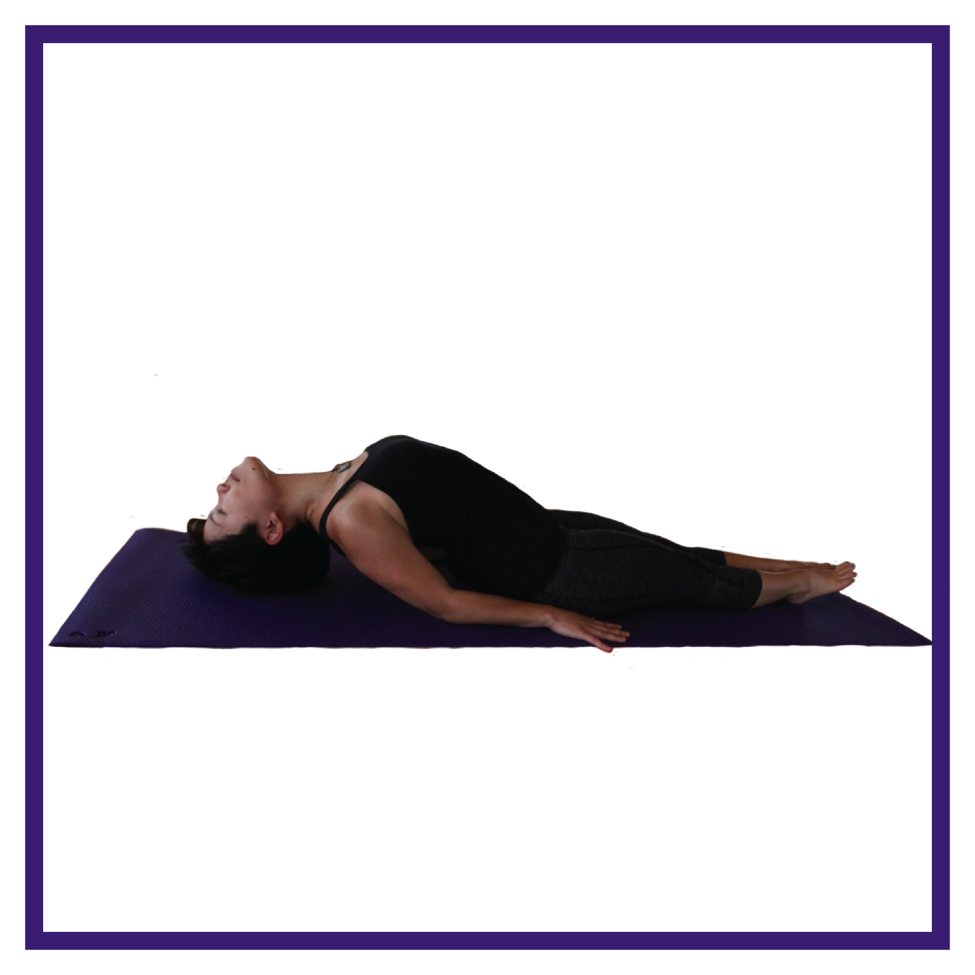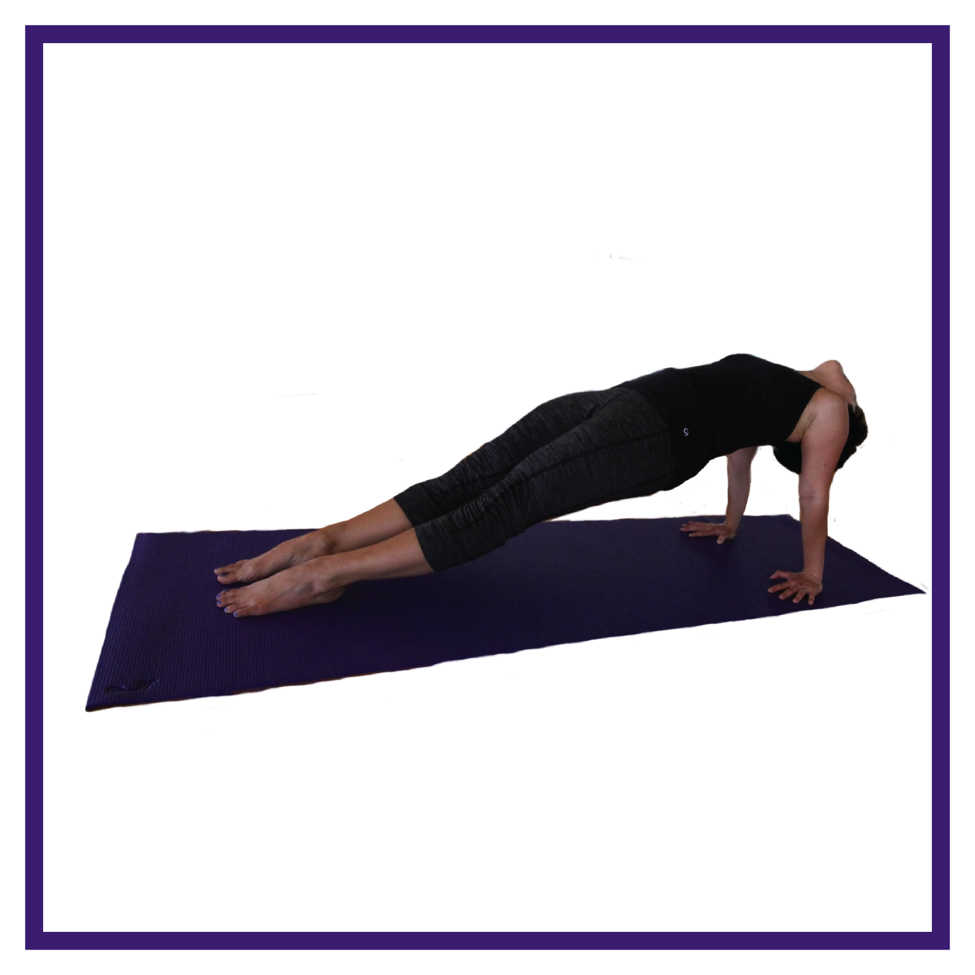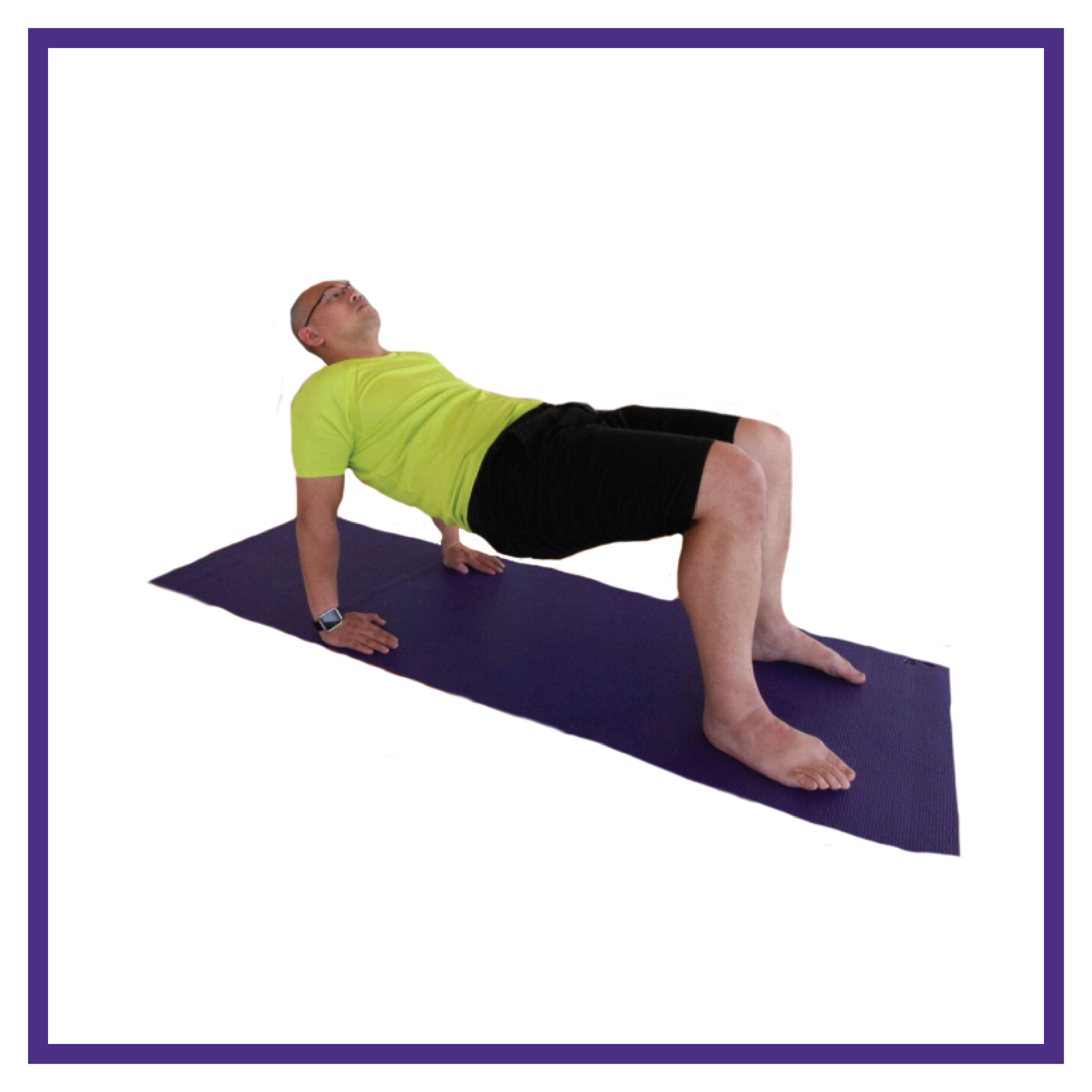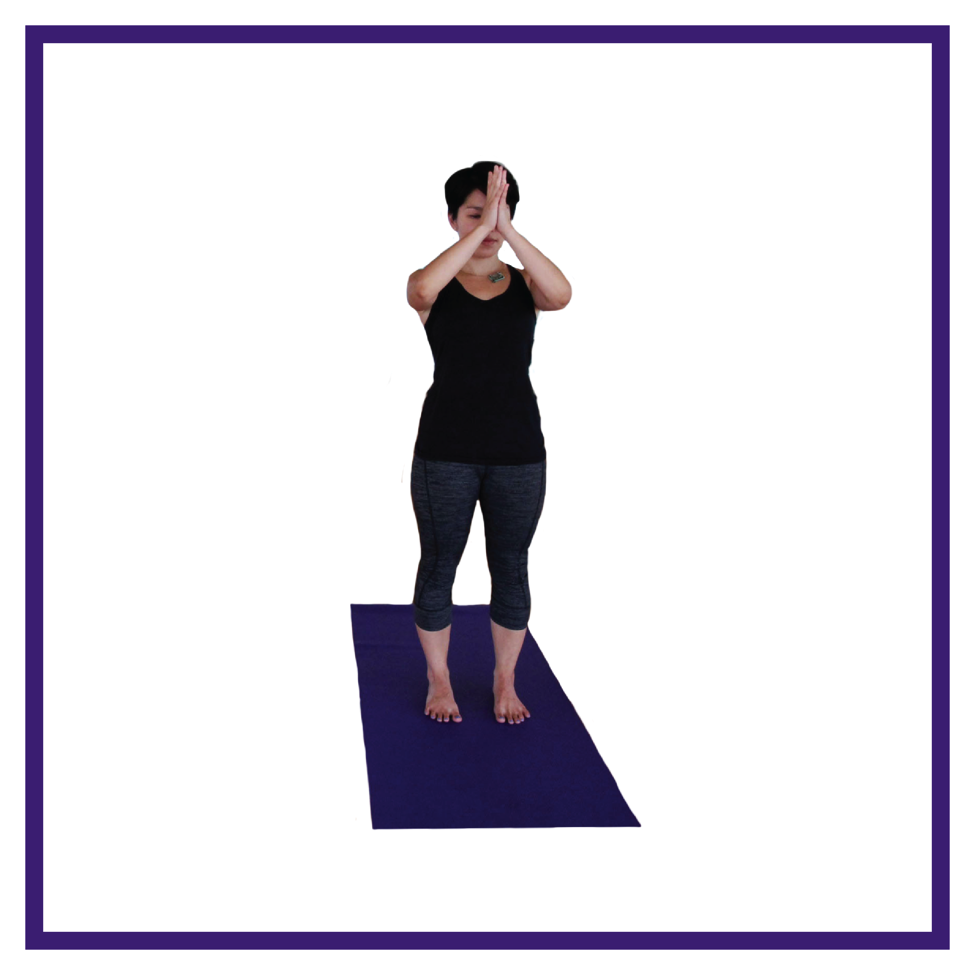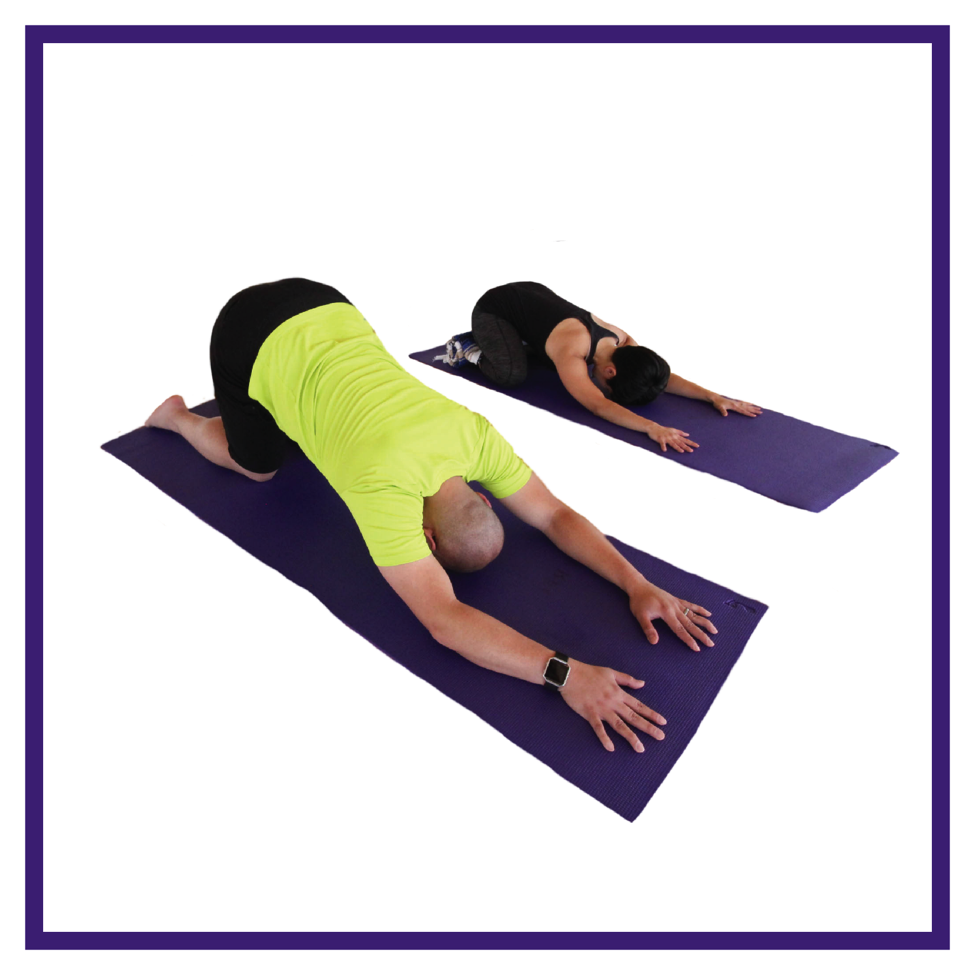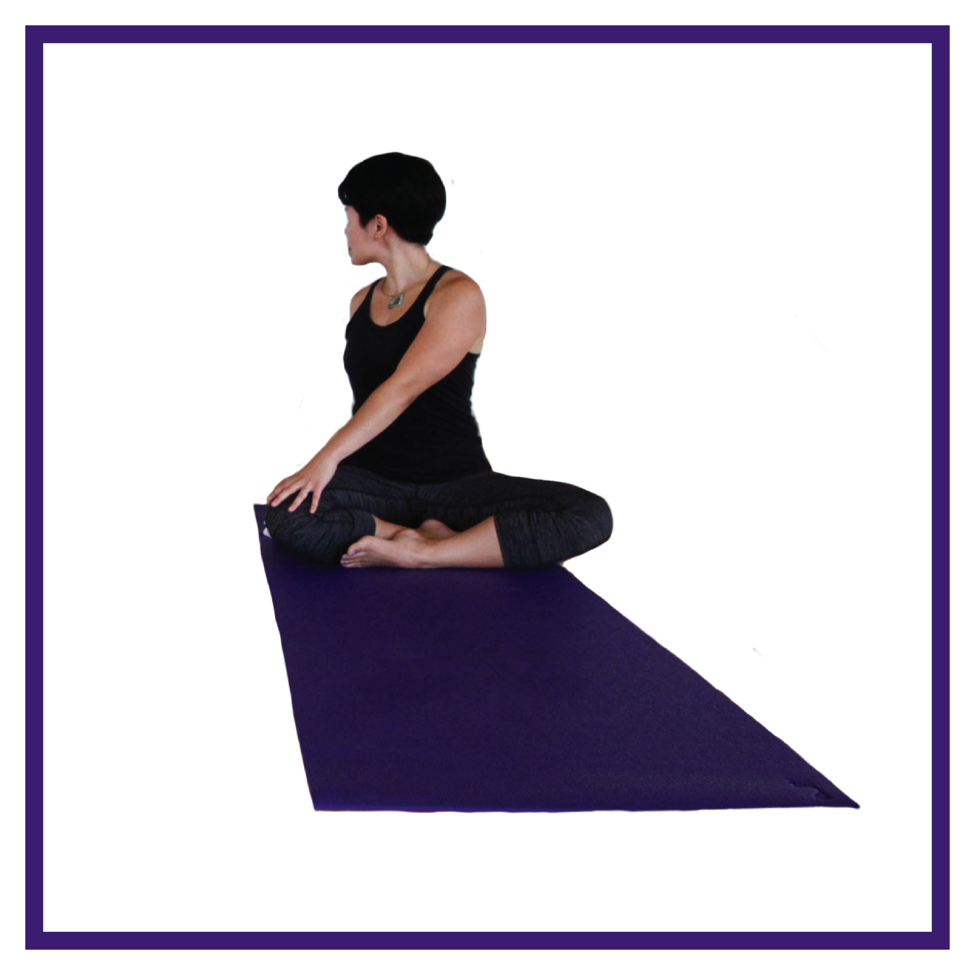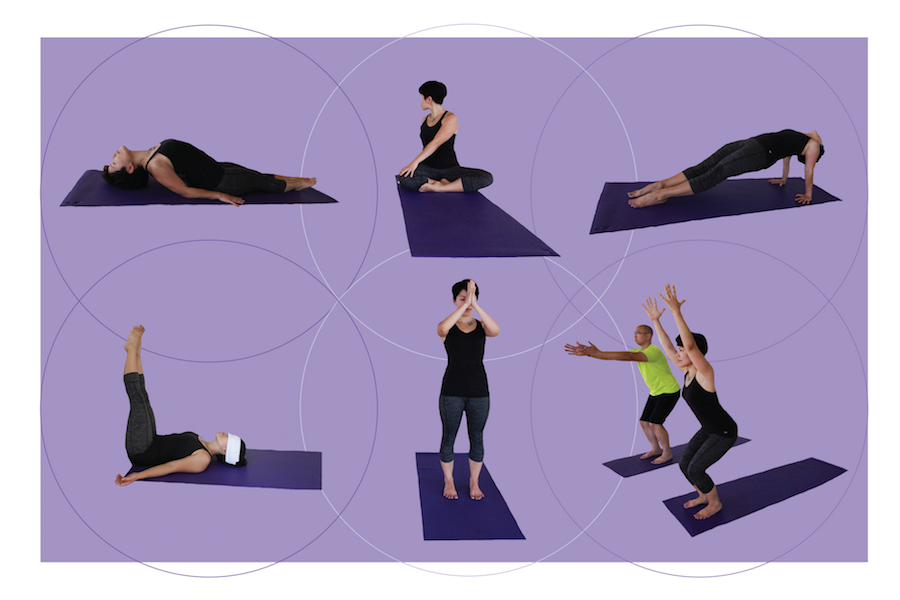
Yoga Month: Chakras Expression and Insight
Welcome to Week Three of Yoga Month at the University of Washington! Each week in September, more than 1500 staff, faculty, and students from across the UW are learning about and celebrating the benefits of yoga with a special focus on the seven chakras. If you missed Week 1 or Week 2, there’s still plenty of time to catch up with your practice.
We encourage participants to practice each week—both on and off the mat. They can do so through the partnership of UW Recreation and Leela Yoga Studio, who are hosting many yoga classes on all campuses, as well as through a slate of other opportunities and discounts. The Whole U is also hosting a huge celebration of yoga class on September 28 from noon to 1 p.m. in the HUB ballrooms. Be sure to join us there!
This week’s focus is on the chakras of expression and insight.
Expression
The fifth chakra resides at the throat center and is all about communication, creative expression, and speaking truth. It involves our ability to listen, speak with intent, and connect to the ways that we express and share our passions with the world.
This center reminds us that if we ignore what it is we truly desire or sweep under the rug the ways in which others have impacted us negatively, we end up living from a less authentic and expressive place. This area of the throat correlates to ether, is represented by a light blue color, and relates to navigating deception both from ourselves and from others.
When this wheel is out of balance, practitioners might experience reduced creativity, fear of speaking and an inability to confront and state what isn’t working. Physiologically, there might be dysfunction with the thyroid, soreness in the throat, and pain particularly in the neck and jaw.
To cultivate more power of expression, explore:
- Postures:
- Fish: Stay super engaged in your forearms throughout this whole pose; to release, do not lift your head way up off the floor; instead, lift slightly to release arms and shoulders and then bring chin to neutral.

- Reverse table or inclined plane: If your hips are not able to stay high in inclined plane (legs stretched forward), bend your knees for reverse table (keep hips inline with knees).


- Legs up the wall: If your hamstrings are a little tight, move your sitting bones a bit away from the wall and keep a bend in your knees (you’ll still get the full benefit of the inversion). Having the sitting bones further away from the wall and knees bent is important for many with low back tension.


- Fish: Stay super engaged in your forearms throughout this whole pose; to release, do not lift your head way up off the floor; instead, lift slightly to release arms and shoulders and then bring chin to neutral.
These postures focus the throat area to nourish the thyroid gland. Throat opening with the head tilting in fish and reverse table or inclined plane, and reverse blood flow downwards in legs up the wall.
- Foods:
- Herbal teas, warm water with honey and ginger
- Soups
- Seaweeds
- Additional practices:
- Read up about non-violent communication and then step into a difficult conversation you’ve been ignoring.
- Sing in the shower, car, or take a singing class.
- Practice listening (start with one minute of pure listening, no interruption).
- Express yourself through art, poetry, dance, song, etc.
- Journal prompt: Where is one place (or one person) in your life you know you want to step into greater truth in/with? What would change if you actually spoke your truth? What is one step you can take to move in that direction?
Insight
The sixth chakra resides in the spot right above the center of the eyebrows and is all about intuition, inner sensitivity, perception, and reflection. It involves our ability to sense what lies beneath the tangible surface and lead some portions of our daily life from the inside out, instead of just the outside in.
This center reminds us that if we ignore the guidance of our inner knowing we might end up living in regret for overlooking our personal intuitive inclinations. This area of the throat correlates to light, is represented by the color indigo, and relates to navigating a more contracted or limited point-of-view.
When this wheel is out of balance, there might be an experience of being overly external, never taking personal alone time, and difficulty seeing internal and external patterns. Physiologically there might be eye strain, vision problems, headaches, and insomnia.
To cultivate subtler seeing, explore:
- Postures:
- Standing hand to third eye

- Child: Child pose is not cozy for everyone. If the hips feel too tight, shift your weight forward; hips in line with knees is key, arms out in front, forehead onto the mat in puppy stretch.

- Seated twist with soft eyes: just as in cross legged seat, if low back or hips are tight, sit up on a folded blanket or cushion.

- Standing hand to third eye
These postures focus being more introspective, expanding perspective, and shifting attention to the subtler experience of body, breath, and awareness. Awakening this third eye center through touch of thumbs in standing, making contact of forehead to earth in child, and exploring the space often overlooked, behind and around in the seated twist.
- Foods:
- Blueberries, grapes, blackberries.
- Walnuts, wild salmon, sardines, flax and chia.
- High magnesium foods (spinach, chard, cacao, pumpkin seeds, almonds and avocado)
- Additional practices:
- Observing intelligent patterns in nature.
- Spending time in vast spacious landscapes.
- Commit to a time frame (one hour, half-day, full day) to be more quiet and reflective. Instead of seeing or interacting, notice what shifts if you feel life for a little while.
- Explore a 5-15 minute soft gaze seated meditation watching your breath.
- Journal prompt: Reflect on a time your trusted and acted on your intuition and had a positive outcome. What can you learn from that experience? How can you bring more of that into your life now?
This week, Yoga Month participants are encouraged to follow the following plan:
Monday Eve: Buy chakra-related foods at store; journal on fifth chakra journal prompt.
Tuesday AM: Fifth chakra postures (5 min); warm herbal tea.
Tuesday PM: Express through an art form.
Wednesday AM: Fifth chakra postures (5 min); warm herbal tea.
Wednesday PM: Journal on sixth chakra journal prompt. Soup for dinner.
Thursday AM: Sixth chakra postures (5 min), blueberries and blackberries included in breakfast.
Thursday PM: Reflective, quiet time.
Friday AM: Sixth chakra postures (5 min), omega-3 rich breakfast.
Friday PM: Meditation.
Saturday Day: Nature time, notice intelligent patterns.
Sunday AM: Fifth and sixth chakra postures (10 min)
Sunday PM: More quiet, spacious time; journal on what was learned from this week’s explorations.
To further your journey, join us for the Mindfulness & Courageous Self-Care: A Nurturing Retreat. You can register here.
Additionally, if you share a photo of yourself on doing yoga and share it with us on Facebook, Instagram, Twitter, or email, you’ll receive a fabulous purple Whole U yoga mat! Be sure to tag your post #uwyoga.
Special thanks to yoga pose models May Lim (Department of Electrical Engineering) and Nate Panelo (Office of Minority Affairs & Diversity).
Namaste.
 Danny Arguetty, M.A., is the mindfulness program manager at the University of Washington, a yoga teacher (and teacher trainer), nutrition/life coach, and a lover of the environment. He is the author of Nourishing the Teacher and The 6 Qualities of Consciousness. Passionate about helping people flourish through mindfulness, wellness, and personal self-development, he has over a decade’s worth of experience in group facilitation, one-on-one coaching, and experiential teaching.
Danny Arguetty, M.A., is the mindfulness program manager at the University of Washington, a yoga teacher (and teacher trainer), nutrition/life coach, and a lover of the environment. He is the author of Nourishing the Teacher and The 6 Qualities of Consciousness. Passionate about helping people flourish through mindfulness, wellness, and personal self-development, he has over a decade’s worth of experience in group facilitation, one-on-one coaching, and experiential teaching.
Danny has guided workshops throughout the United States, led basic and advanced yoga trainings in the U.S. and India, and spoken at Facebook, Olson Kundig, and Gravity Payments (all in Seattle). He served as adjunct faculty at Williams College, leads a quarterly course on Intro to Mindfulness at UW, and is a faculty member at Kripalu Center for Yoga & Health.
